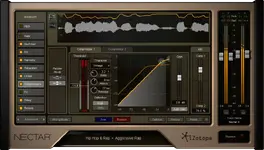B
banjo71
New member
I had a question about vocal compression.
When I learned about how to compress vocals, my mentor told me use 2 compressors:
vocal compressor 1:
Knee = 0 dB, Ratio = 8:1, Attack = 10 ms, Release = 50 ms, Gain = 1 dB, Set Threshold where peaks are compressed by about -5 dB.
vocal compressor 2:
Knee = 15 dB, Ratio = 2:1, Attack = 20 ms, Release = 120 ms, Gain = 2 dB, Set Threshold where peaks are compressed by about -1 dB
This was a general starting point and kind of tweak it from there.
Do they make single compressors that do the same thing for the vocal? That way instead of using 2 plugins you use 1 plugin.
When I learned about how to compress vocals, my mentor told me use 2 compressors:
vocal compressor 1:
Knee = 0 dB, Ratio = 8:1, Attack = 10 ms, Release = 50 ms, Gain = 1 dB, Set Threshold where peaks are compressed by about -5 dB.
vocal compressor 2:
Knee = 15 dB, Ratio = 2:1, Attack = 20 ms, Release = 120 ms, Gain = 2 dB, Set Threshold where peaks are compressed by about -1 dB
This was a general starting point and kind of tweak it from there.
Do they make single compressors that do the same thing for the vocal? That way instead of using 2 plugins you use 1 plugin.

